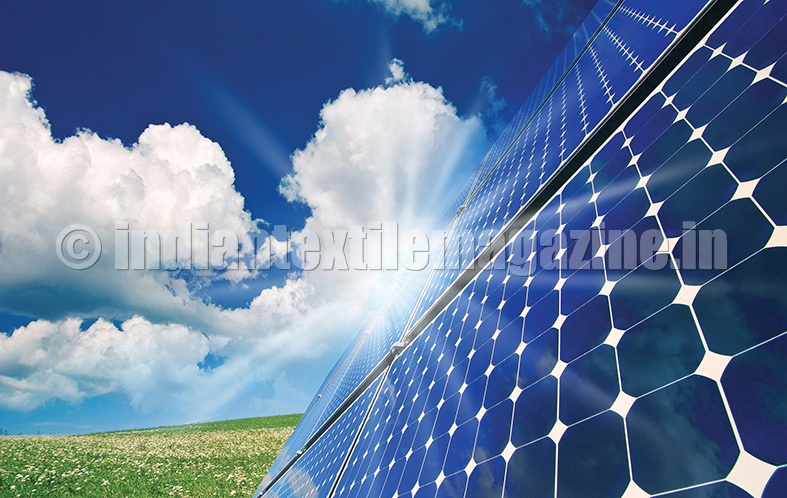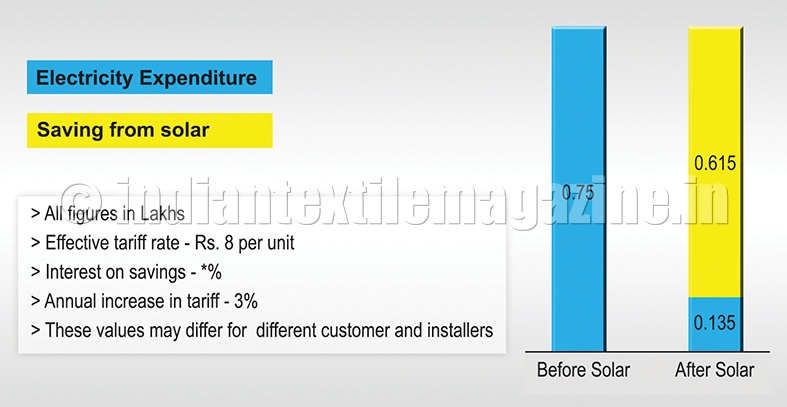The textile industry is one of the early adopters of renewable energy in India. This has contributed significantly to the growth of renewable energy in the form mostly of wind installations in the country. The textile industry has about 2700 MW of wind generation capacity in Tamil Nadu alone.
With the growth of the solar ecosystem in India and the several advantages of solar energy, the textile industry has started to deploy solar power systems in a fairly big way. The advantages are quite obvious:
* Cost reduction – The electricity tariff for industrial consumers is the highest among all sectors. In most States, solar power is much cheaper. Prices are going to remain almost the same throughout the lifetime of the solar plant (except for degradation and some replacement), whereas the rates for power from conventional sources are expected to escalate year on year
* Compliance of renewable purchase obligations (RPO) – Several industrial consumers of electricity have to meet their RPO, and setting up of a solar plant is one of the simplest ways to comply with the RPO.
* Availability of roof space – Unlike commercial establishments, most of the automotive factories have vast unshaded roof area and vast tracts of unused land. Setting up of solar plants in these unshaded and unused areas is a relatively easy task.
* Energy savings – Solar power generated in the site can offset electricity that needs to be drawn from the grid and reduce the reliance on diesel gensets. This, in turn, leads to further cost reduction.
* Reducing carbon footprint – Most of the companies operate with explicit carbon footprint reduction. Solar plants help in environmental protection and also reduce carbon footprint.
One of the textile firms that understood the benefits of solar power and pioneering the deployment of solar systems is Alpine Knits based out of the textile hub Tiruppur in Tamil Nadu. It commissioned a 1 MW plant in 2013 on the sloping roof of its textile factory. The solar PV system synchronizes with the incoming utility grid and provides energy for captive consumption during daytime. In case of power outages, the solar system synchronizes with the diesel generator to provide upto 65 per cent of the energy required for operations.
Following the example set by Alpine Knits, several other textile factories in the region have installed solar PV systems:
The incredible drop in solar module prices and the growth of the solar ecosystem have created the ideal situation for more widespread adoption of solar PV systems. The textile industry can benefit a lot by deploying solar power projects.
Intersolar India 2015, the largest exhibition and conference scheduled to be held at the Bombay Exhibition Centre during November 18-20, will offer the latest solutions from the solar power industry.

